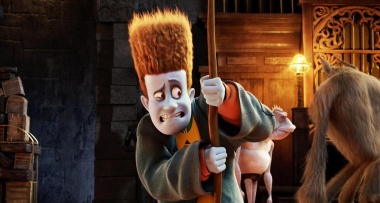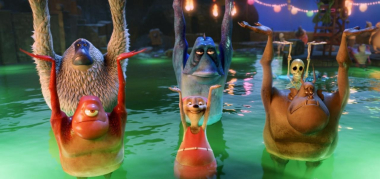Hotel Transylvania Review
A Surprising Invitation Into a Whimsical World
Stepping into the theater for Hotel Transylvania, I honestly did not know what to expect. I had heard mixed opinions about the film, but I was intrigued by its promise of blending humor, fantasy, and a gentle nod to classic horror in a family-friendly manner. As someone who enjoys quirky animated adventures, I found myself immediately swept up in the creative energy that the movie exuded. The vibrant and carefully crafted world of monsters was unlike any other I had encountered before in animated cinema.
The Artistry of Every Frame
What truly struck me was the visual richness the movie brought to life. From the moment I saw the opening scene, I could tell that every frame was artistically composed. The creative team behind Hotel Transylvania managed to capture the essence of a cozy, haunted retreat with flamboyant details that spark curiosity. I found myself marveling at the way hues of deep purples and shimmering blues were not merely a background setting but an active, almost character-like element in the narrative. The meticulous attention to detail in the backgrounds, the subtle textures on the walls of the castle, and the playful glimmers of mischief in the environment made the movie an aesthetic delight.
An Inventive Narrative That Embraces the Absurd
One of the aspects that resonated with me was the movie's willingness to take creative risks with its storyline. Hotel Transylvania did not play by the usual rules. I appreciated how the narrative paid homage to classic horror tropes while simultaneously twisting them into absurd and humorous scenarios. The characters, although rooted in the mythology of horror, were portrayed in a refreshingly humanized way. Their quirks, vulnerabilities, and friendly banter brought a genuine touch of warmth to what could have easily been a caricature of monster legends.
A Playful Mix of Humor and Heart
Humor was my constant companion throughout the film. Every joke was crafted with a delicate balance between clever wordplay and situational comedy that eased any tension built during the roller-coaster ride of the narrative. I found myself laughing heartily at unexpected moments, often accompanied by a sudden feeling of endearment for the characters. This was not a film that relied on cheap gags or repetitive puns; rather, it celebrated the interplay between humor and sincerity. The voice acting contributed greatly to this aspect, with each actor delivering lines with impeccable timing that made the dialogue feel both spontaneous and natural.
The Character Ensemble That Made It So Memorable
Reflecting on the characters in Hotel Transylvania, I was thrilled by the depth and variety showcased on screen. Each character had their own distinct personality, making it easy for me to connect with them on an emotional level. I was particularly fond of the portrayal of the wise yet playful host of the hotel, whose charm and quirky habits added a memorable flair to the entire experience. Even the seemingly minor characters were given enough screen time to reveal intriguing details about their background, allowing me to appreciate the interconnectedness of their lives within the monster community. The film’s approach to character development steered away from one-dimensional caricatures, instead offering layered personas who could be both comical and endearing.
The Unanticipated Depth in Its Storytelling
While the film was designed as an entertaining romp, I quickly realized that Hotel Transylvania was more than just a simple comedy. Beneath the playful veneer, there were moments of genuine introspection and reflections on the nature of acceptance and belonging. I found these instances particularly poignant, as they were interwoven seamlessly with the humor. The narrative invited me to explore themes like family dynamics, the fear of the unknown, and the courage to embrace one’s true identity—even when it might seem unconventional. This hidden depth made the viewing experience both intellectually stimulating and emotionally rewarding, encouraging me to ponder the subtle messages long after the credits rolled.
The Dynamic World-Building of a Haunted Haven
One of the most striking elements of the movie was its world-building. The hotel itself became a character, a space where every creak in the floor and every shadow in the corridor told its own little story. I was lucky enough to immerse myself in a setting where every element, from the architecture to the ambient sounds, enhanced the overall atmosphere. The design was both playful and meticulously structured, inviting audiences to lose themselves in this alternate universe. Every detail seemed to have been chosen with care, making the seemingly whimsical setting feel both enchanting and strangely believable. I found myself mentally sketching out the layout of the hotel and imagining the continued lives of the charmingly eccentric residents long after the film had ended.
The Nuances of Voice Work and Music
The auditory experience of Hotel Transylvania was just as captivating as its visual elements. Delving into the dialogue and the vocal performances, I was impressed by how every line was imbued with character and intention. The actors delivered their performances with a blend of enthusiasm and precision, ensuring that every utterance resonated with its intended humor and sentiment. Coupled with an engaging musical score that perfectly matched the tone of the film, I found that the soundtrack was instrumental in enhancing the emotional rhythm of the story. The score ebbed and flowed in harmony with the narrative, intensifying moments of both tension and joy without overwhelming them. This balance allowed each scene to breathe, leaving me in a state of awe at the seamless marriage between sound and story.
An Interactive Feel That Invites Audience Participation
Even though the movie is a passive viewing experience, I couldn't help but feel as though it was inviting me to actively participate in its unfolding narrative. This interactive feel came through in the clever visual gags and meta-humor that acknowledged the audience's presence. I experienced moments where I felt directly addressed, as if the filmmakers themselves were sharing an inside joke with me. This subtle fourth-wall nod was both refreshing and engaging, blurring the lines between the narrative world and my own watching experience. It made the movie not just a series of scenes, but a conversation, pulling me deeper into its delightful, unpredictable plot.
The Integration of Technology and Artistic Vision
Hotel Transylvania stood as a striking example of how technology can serve as a vessel for artistic vision. I found myself marveling at the level of detail achieved through the latest animation techniques, where technology and creative storytelling met in perfect synergy. The character animations were fluid and expressive, capturing the myriad emotions of a lavish monster ball as well as the softer moments of vulnerability. The use of advanced lighting and shadow effects imbued each scene with a lifelike presence, making the fantastical landscapes feel tangible. Although I appreciate art in many forms, witnessing a film where state-of-the-art animation technology was harnessed for creative storytelling was an experience that resonated deeply with me.
A Journey Through Layers of Emotional Resonance
Diving deeper into the film, I began to appreciate the layers of emotional resonance that were embedded within its humorous exterior. Though it often delighted in absurd scenarios and fantastical antics, there were slices of the narrative that spoke to universal human emotions. Moments of introspection were woven naturally into the storyline, offering me a glimpse into the vulnerability of characters who, despite their monstrous exteriors, faced their own fears and insecurities. I watched as relationships among the characters blossomed in ways that reminded me of my own interpersonal connections. The film's ability to balance humor with tender, relatable moments allowed me to reflect on the complexities of identity and community, which elevated the viewing experience to something that lingered in my thoughts long after I left the theater.
An Unexpected Perspective on Classic Tropes
Hotel Transylvania reimagined well-known horror tropes through a lens of irreverence and genuine creativity, which afforded me a fresh perspective on what could have been a predictable storyline. I was intrigued by how the movie managed to honor the classic imagery associated with haunted hotels and supernatural beings without succumbing to cliché. Instead, it reworked these familiar elements into a narrative that celebrated diversity and set aside conventional judgments about what constituted a monster. As I sat through the film, I discovered that the true charm was not in trying to scare the audience, but in turning the genre on its head with a sense of compassion and humor. This novel approach enabled me to see the blend of horror and comedy in a light that was both intellectually provocative and emotionally uplifting.
The Subtle Interplay of Cultural References and Modern Sensibilities
Another aspect that caught my attention was the film's clever integration of cultural references and modern sensibilities. The dialogue was peppered with playful nods to both classic horror icons and contemporary pop culture trends, creating an intertextual dialogue that I found delightfully refreshing. These references were never forced; they emerged naturally from the context, making the entire viewing experience feel like a shared cultural celebration. I particularly enjoyed how the humor transcended generational divides, offering moments that could be appreciated by both young viewers and adults with a taste for irony and nostalgia. This seamless interplay reinforced the idea of the film as a unifying piece of storytelling, capable of engaging a diverse audience in a conversation about the evolution of the horror-comedy genre.
The Experimentation With Narrative Structure
Throughout its runtime, Hotel Transylvania played with narrative structure in ways that kept my attention riveted to the screen. The film did not shy away from experimenting with timing, pacing, and the flow of information. In several instances, I found myself surprised by shifts in perspective that offered new insights into a scene or character. The innovative narrative techniques, such as non-linear storytelling and clever flashbacks, not only served to deepen the plot but also allowed the filmmakers to challenge the audience's expectations. I appreciated the risk taken in delivering a story that was both dynamic and unpredictable, as it accentuated the playful nature of the overall experience without detracting from its coherence.
Embracing the Imagination With Childlike Wonder
One of the most enchanting qualities of Hotel Transylvania for me was its ability to evoke childlike wonder without condescension. There was an unmistakable energy in the film that celebrated the imaginative possibilities of animated storytelling. I found myself reminiscing about the days when a simple tale of monsters and magic was enough to spark your imagination and transport you to a world of endless possibility. This magic was not just reserved for the visuals or the humor; it permeated every aspect of the film, encouraging me to see the world with fresh eyes. The film maintained a delicate balance between the playful and the profound, inviting its audience to embrace the joy of creativity alongside the bittersweet recognition of life's more complex realities.
Screenshots






Leave a comment
Your comment is awaiting moderation. We save your draft here
0 Comments